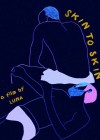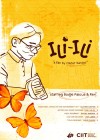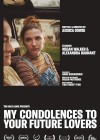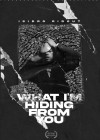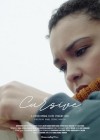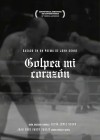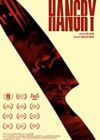
Ladies' Skirts Nailed to a Fence
Original Title
Women's Rights- Director: James Bamforth
CGiii Comment
A completely bizarre short film...
Watch...
The(ir) Blurb...
Women's Rights (aka. Ladie's Skirt Nailed to a Fence) was produced in 1899, by the british filmmaker James Bamforth . James Bamforth, born at Cartworth, Yorkshire in 1841 or 1842, is among a select group of early British film-makers, including Cecil Hepworth, George Albert Smith, and Robert Paul. Bamforth & Co Ltd is a publishing, film and illustration company based in Leeds, West Yorkshire, England.
Bamforth & Co Ltd was started in 1870 by James Bamforth, a portrait photographer in Holmfirth, West Yorkshire. In 1883 he began to specialise in making lantern slides. During 1898 'Bamforth & Co. Ltd' started making silent monochrome films with the Riley Brothers of Bradford, West Yorkshire, who had been making films since 1896. James Bamforths expertise with lantern slides proved invaluable in the film making. They used a camera developed by Bradford cine inventor Cecil Wray. This partnership with Riley and Bamforth, known as 'RAB' films lasted until 1900. Though film production was restarted in 1913 it was again stopped in 1915, when the film production was changed to the new named 'Holmfirth Producing Company, which quickly moved operations to London. The last Holmfirth film, Meg o' the Woods, emerged in February 1918.
In 1910 Bamforth & Co Ltd started making illustrated 'saucy' seaside postcards which, like his films, were exported worldwide for sale. The company was bought out by the Dennis Printing Company, in Scarborough during the early 1980s. Following the demise of Dennis the 'Bamforth & Co' name and postcards rights to over 50,000 designs were purchased by Ian Wallace in 2001. Although the Bamforth company was best known in the United Kingdom for producing a wide range of topographical and tourist postcards as well as 'saucy' seaside cards, what is less well known was their rich history of filmmaking. Drawing heavily on their work with magic lantern cinema, the company began making monochrome films in 1898. The popularity of these films, in particular those featuring a character named Winky, led to a film industry in West Yorkshire which for a time surpassed that of Hollywood in terms of productivity and originality. It is also believed the company invented film editing with the release in 1899 of The Kiss in the Tunnel.
The film is funny because it is a fascinating and now-glaring mistake: it is a fictional film, showing one event in two shots. Two different shots, but not two different angles. The illusion of two different angles is what is intended, but Bamforth doesn't move the camera, but simply moves the two women to the other side of the fence. What results is not a cut, but a jump-cut; and the filmmaker hasn't thought about the illusion of the cut, because his women in the reverse shot have not changed their position.


